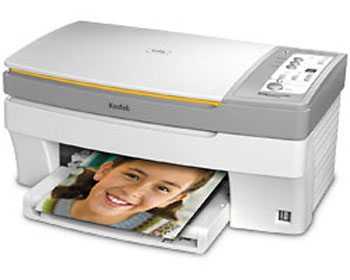Do consumables (notably ink) matter to IT departments?

Kodak released an inkjet printer line that aims to cut ink costs. Kodak's argument: Buy our printers and save money on ink.

The problem: Kodak is making its pitch to the wrong audience--its printer line (images) targets consumers. As J.P. Morgan analyst Bill Shope notes in a research note:
"Kodak is focusing on higher cost hardware and lower cost consumables. With its 3 EasyShare All-in-One printers priced at $150-300, the company is promoting its low-cost ink, which touts a $0.10 photo cost per page. Most consumers, however, tend to focus on entry costs. While Kodak's printers may appeal to some consumers who print a lot and have a definable TCO calculation, we believe that most consumers do not consider TCO when making purchasing decisions, and instead focus on upfront cost."
Shope's conclusion is that Kodak doesn't stand a chance against Hewlett-Packard's printing juggernaut. And he's probably right.
But Kodak's argument is still valid even though its products are targeted at the wrong market. Kodak's printer line should target medium-sized and small businesses.
Today, Kodak's best hope is to steal some market share from second-tier printer players such as Lexmark and Epson. But if Kodak can move upstream into the enterprise it could be dangerous.
Why? Kodak is trying to upend the underpinnings of the printer market. Citigroup analyst Richard Gardner notes:
"Kodak's new inkjet printers challenge the industry's traditional razor/razor blades business model."
Bottom line: If Kodak can tip over the razor/razor blade bandwagon its product launch may be an important marker in the future.